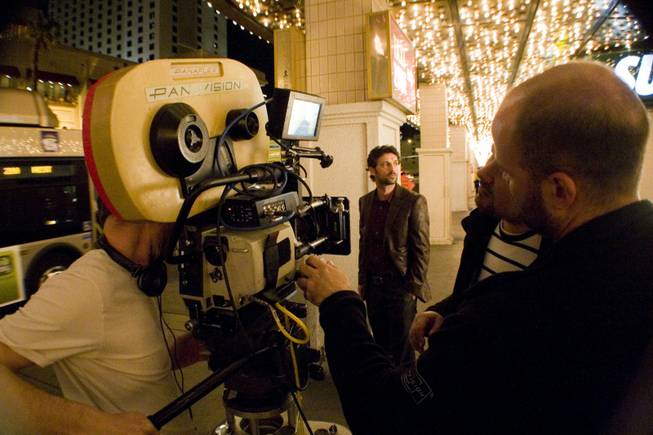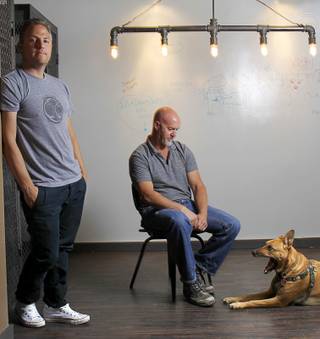
Seven Ft / Special to the Sun
Crews film a scene from the foreign film “The Gambler” at the Plaza in downtown Las Vegas.
Wednesday, June 12, 2013 | 2:42 p.m.

Mayor Carolyn Goodman delivers the State of the City address at Las Vegas City Hall on Thursday, January 10, 2013.
Lights. Camera. Tax credits.
All Las Vegas’ fledgling film industry is missing is the action, and proponents are touting Gov. Brian Sandoval’s signing of a tax incentive bill for film productions as the next step toward bringing a bit of Hollywood to Las Vegas.
The bill’s signing late Tuesday had Mayor Carolyn Goodman reminiscing the next morning about when “Casino”-mania swept the city when director Martin Scorsese filmed here in the mid 1990s.
“I just remember what it did for the economy here and the amount of dollars that were spent,” she said at a press conference Wednesday at City Hall. “People were extras. There was an energy and an excitement. ‘Casino’ took over the town, took over homes, took over sites. It put so many people to work.”
Goodman was a leading cheerleader for the bill and brought actor Nicolas Cage with her to Carson City to help make the pitch.
“What he was able to bring for the first time was credibility that producers, directors, actors want to come here,” she said. “With any luck, this will be a huge move for us.”
The bill allows for tax credits worth up to $20 million annually to be distributed to film and television projects that spend at least 60 percent of their production costs in state. The credits would be worth up to 15 percent of expenses on a variety of things, including set construction, wardrobe, filming, editing, sound, lighting, food and lodging.
Projects would have to have a budget of at least $500,000 and no single project can receive more than $6 million in credits.
The incentives put Nevada on a more level playing field with dozens of other states, which for years have dangled millions of dollars in tax credits to entice film productions.
Goodman said Las Vegas is uniquely suited for the silver screen because of its iconic locations and a built-in population of technical workers experienced in staging productions on the Strip and elsewhere.
Bringing more film and television projects to Las Vegas could have a sizable impact on the local economy, as spending from shoots spills over to local grocery stores, hotels and more, said Chris Ramirez, founder of Silver State Production Services, a local production company.
“It’s the ancillary businesses. During Hangover 3, the whole block was filled up with trucks, catering, tents and whatnot. We’re paying the Plaza to use the space. We’re paying a local tent company for the tent. There was one local dude who was bringing by 40 or 50 propane tanks a night to keep our base camp running,” he said. “There’s always these little spends with local mom and pops.”
Ramirez and Goodman have huge dreams for Las Vegas, envisioning the city playing host to more film festivals and eventually building out a film industry infrastructure with studio space downtown.
They’ll have four years to show the tax incentives are working as intended before the pilot program expires in Dec. 2017. Ramirez said if everything goes according to plan, the state will be expanding the tax credit program in four years because of its success.
“There’s going to be an onslaught of projects coming, so now it’s going to be up to that board that makes the decisions on the incentives to get the right projects. It’s not a big pool and that will go fast,” he said. “It’s up to our industry to do the things where we track it and we show where that ancillary spending is going...so that we can show voters, so that we can show legislators that put their neck that hey this works.”


Join the Discussion:
Check this out for a full explanation of our conversion to the LiveFyre commenting system and instructions on how to sign up for an account.
Full comments policy